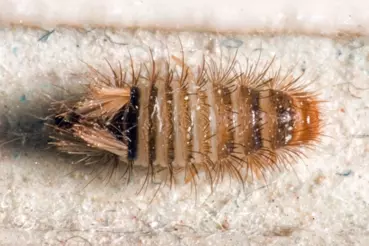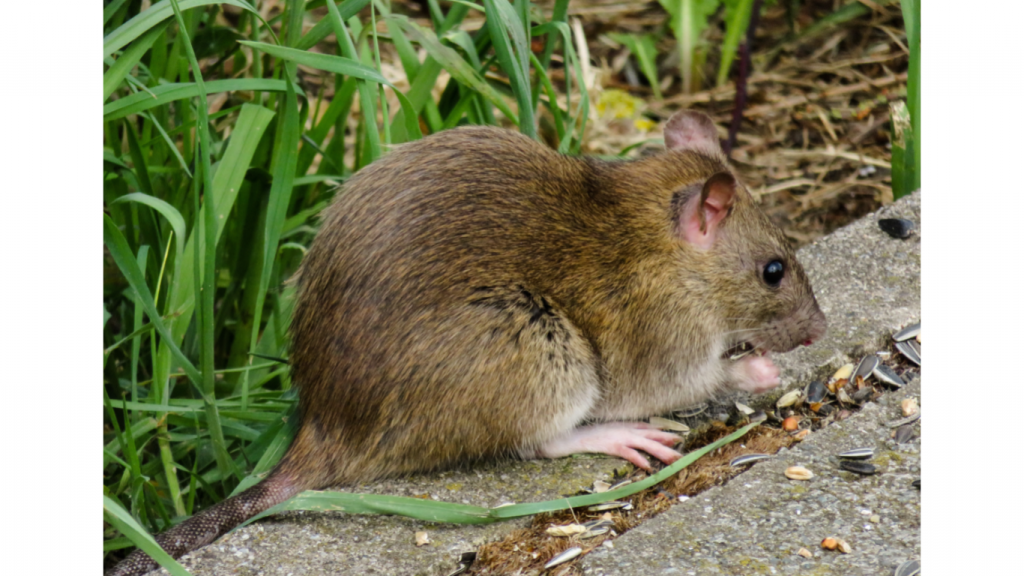Varied Carpet Beetle Pests

General Information
This beetle in larval form is common in houses where it usually does little or no noticeable harm, but it is a feared pest in natural history museums, where it can seriously damage biological specimens. While adults are pollen grazers, larvae feed on natural fibres and can damage carpets, furniture, clothing, and insect collections.
The adult Carpet Beetle feeds only on pollen and nectar of garden flowers but lays its eggs in old birds nests, felt, fabric or accumulated fluff in buildings. It is the larvae from these eggs that do the damage. They feed on feathers, fur, hair, or wool and tend to wander along the pipes from roofs into airing cupboards – which house the clothes and blankets which constitute the food. The larvae of the carpet beetle are known as woolly bears due to their hairy appearance. The larvae hide in dark, undisturbed areas and feed on organic material. Carpet beetles damage consists of fairly well-defined round holes along the seams of fabric where the grubs bite through the thread.
Average Lifecycle
After mating near sources of light, females can lay more than 100 eggs at a time, which will hatch into larvae within seven to 35 days. Adults are capable fliers; therefore, carpet beetles can move from room to room, allowing for rapid infestation. The carpet beetle has an unusual life cycle for an insect, developing from larvae to adult in 1–3 years, depending on the environmental conditions. Larvae hatch from eggs in the spring and early summer, often in the nests of birds. The life cycle takes about a year, and the grubs can survive starvation in hard times for several months. Adults are often seen in April, May and June, seeking egg-laying sites; and the grubs are most active in October before they hibernate. The life expectancy of the adult beetle is about two weeks. During this period, mating occurs and the eggs are laid, either close to the human environs or in bird nests, tree hollows and similar, dry places where larvae can find their food. Then the cycle begins anew.
Quick Facts
Type: Insect
Diet: keratin and chitin of natural fibers (dead insects, animal hair and feathers)
Size: Adults range in length from 1.7 to 3.5 mm
Larvae (Wolly bear) measures up to 4–5 millimetres
Habitat: Range: Europe, in the Near East, in the Nearctic ecozone, in North Africa and in North Asia
Scientific name: Anthrenus verbasci
FUN FACT
• Varied carpet beetles get their name from the rainbow of colour on their backs.
TREATMENT
CALL US NOW SO WE CAN BEGIN YOUR TREATMENT
PLACES OF OPERATION







